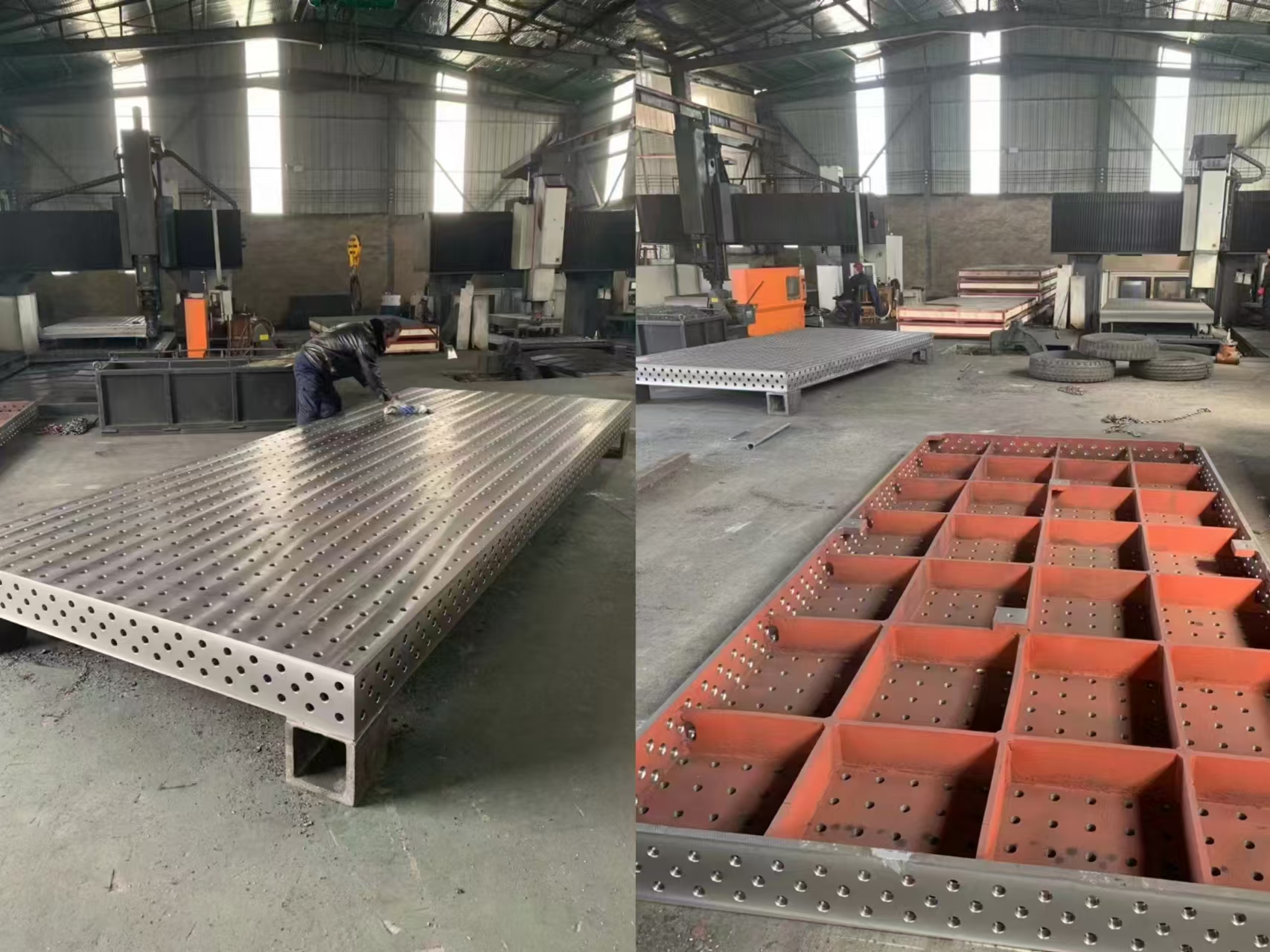- English
- Español
- Português
- русский
- Français
- 日本語
- Deutsch
- tiếng Việt
- Italiano
- Nederlands
- ภาษาไทย
- Polski
- 한국어
- Svenska
- magyar
- Malay
- বাংলা ভাষার
- Dansk
- Suomi
- हिन्दी
- Pilipino
- Türkçe
- Gaeilge
- العربية
- Indonesia
- Norsk
- تمل
- český
- ελληνικά
- український
- Javanese
- فارسی
- தமிழ்
- తెలుగు
- नेपाली
- Burmese
- български
- ລາວ
- Latine
- Қазақша
- Euskal
- Azərbaycan
- Slovenský jazyk
- Македонски
- Lietuvos
- Eesti Keel
- Română
- Slovenski
- मराठी
- Srpski језик
What are the requirements for welding tables in the automotive manufacturing industry?
2024-09-03
1. Structural stability:
- Sturdy overall frame: The welding table needs to have a solid frame structure that can withstand various pressures and impacts that may be exerted by equipment, workpieces, and operators during the welding process, ensuring that there will be no problems such as deformation, shaking, or collapse during long-term use. For example, the connection between the table legs and the tabletop should be firmly welded, and steel or other suitable materials with sufficient strength should be used to ensure the stability of the overall structure.
- High flatness of the tabletop: The tabletop must have high flatness to ensure that the welded workpiece can be placed stably on it. An uneven tabletop may cause the workpiece to be unstable, affecting the welding accuracy and quality. For some automotive parts with high welding precision requirements, the flatness error of the tabletop may need to be controlled within a very small range, such as millimeter-level or even higher precision requirements.
2. Dimensional accuracy:
- Appropriate size: The size of the welding table should be determined according to the spatial layout of the automotive manufacturing workshop and the actual needs of welding work. It is necessary to ensure that there is enough working space to place welding equipment, tools, and automotive parts to be welded, and at the same time, it cannot be too large and occupy too much workshop space, affecting production efficiency and the smoothness of the work process. For example, in the welding work area of automotive seats, the size of the welding table should be able to meet the placement requirements of seats and the operating space requirements of operators.
- Accurate dimensional tolerance: The dimensional tolerances of various parts of the table should be controlled within a strict range to ensure the assembly accuracy and overall performance of the table. For example, the errors in the side lengths and diagonal lengths of the tabletop should be as small as possible, so as to ensure the matching accuracy between the welding table and other peripheral equipment or tools and facilitate the operator to perform welding work.
3. Functional applicability:
- Porous design: The two sides of the table should be designed as perforated plates so that welding tools such as welding guns, welding rods, and fixtures can be conveniently hung, so that operators can quickly and conveniently access tools during the welding process and improve work efficiency.
- Movability and flexibility: Some welding work may need to be carried out at different locations, so the welding table should have certain movability. High-quality wheels or sliding devices can be equipped, and these moving devices should have good locking functions to stably fix the position of the table during welding work and ensure the safety and stability of the welding process.
- Fixture installation adaptability: If the welding table needs to be used with fixtures, then corresponding installation holes or fixing devices should be reserved on the table to facilitate the installation and fixation of various types of welding fixtures, ensure that the connection between the fixture and the table is firm and reliable, and accurately position the automotive parts to be welded.
4. Material requirements:
- High temperature resistance: A large amount of heat and sparks will be generated during the welding process. The material of the welding table must have good high temperature resistance, be able to withstand high temperature radiation and spark splashing during the welding process, and not be easily deformed, burned, or damaged. Generally speaking, it is a more suitable choice to use high-quality steel or other high-temperature-resistant metal materials.
- Corrosion resistance: There may be various corrosive substances in the environment of the automotive manufacturing workshop, such as oil stains, coolants, chemical reagents, etc. The material of the welding table should have good corrosion resistance and be able to be used for a long time in this harsh environment without being corroded and damaged.
5. Safety performance:
- Good insulation performance: The use of electrical equipment will be involved in the welding process. The material of the welding table should have good insulation performance to prevent electric shock accidents of operators. Especially for parts such as the tabletop that are in contact with or close to electrical equipment, it is necessary to ensure that the insulation performance meets relevant safety standards.
- Edge treatment: The edges of the table should be rounded to avoid sharp corners and prevent operators from being injured due to collisions during the work process.





